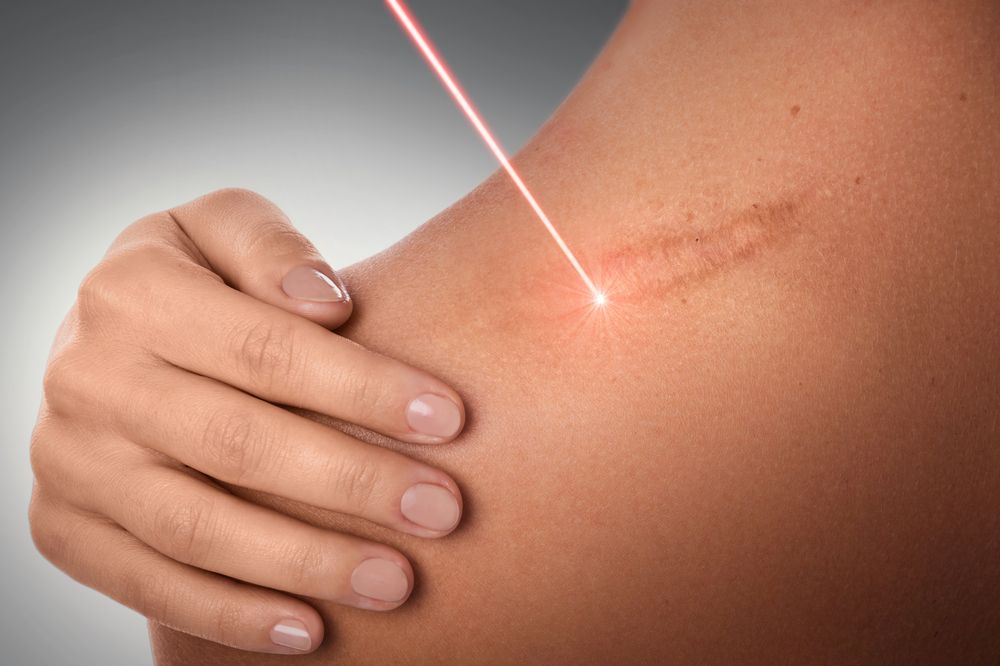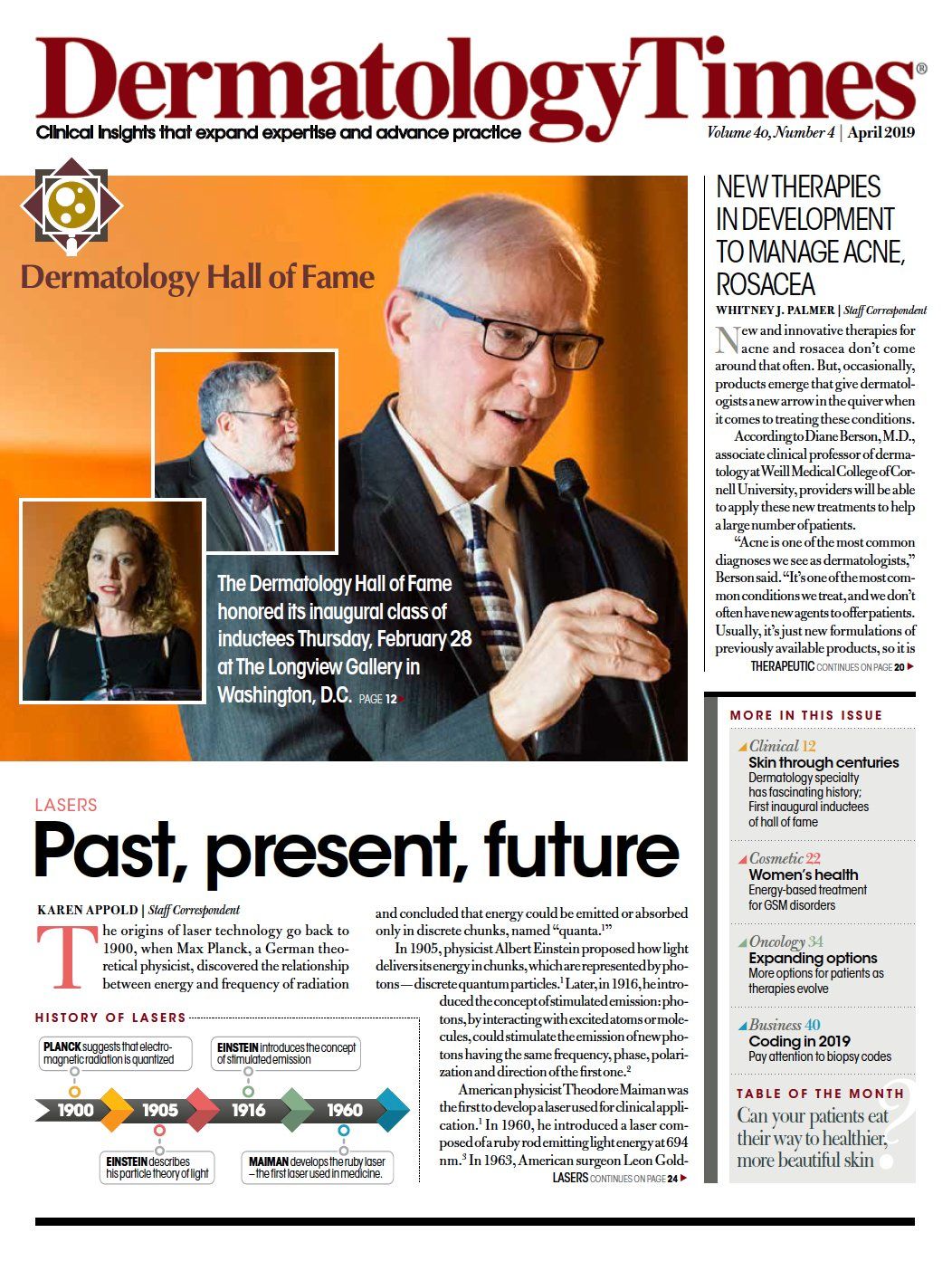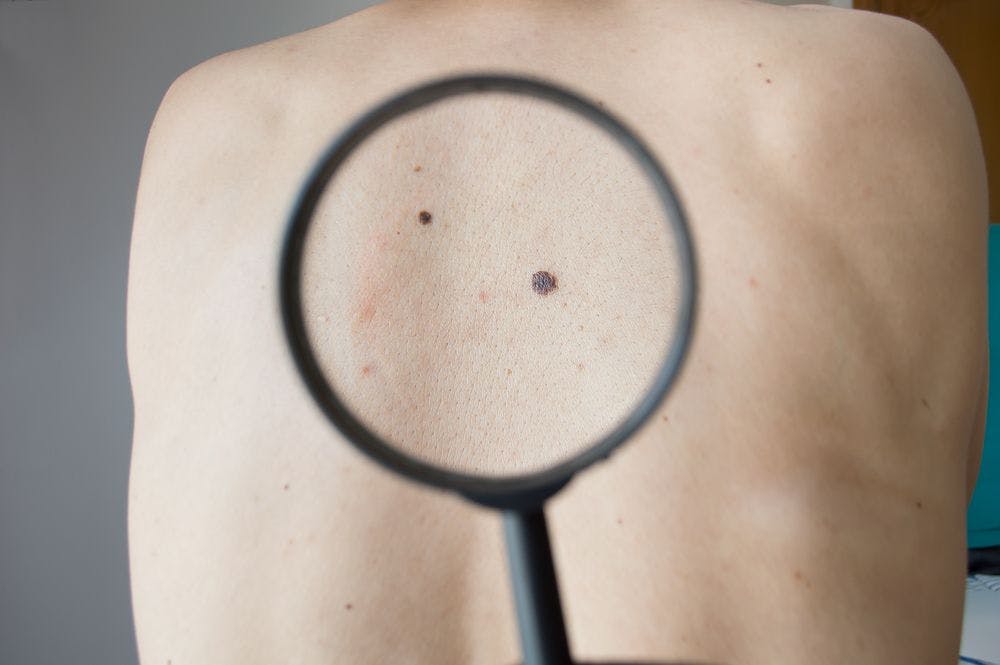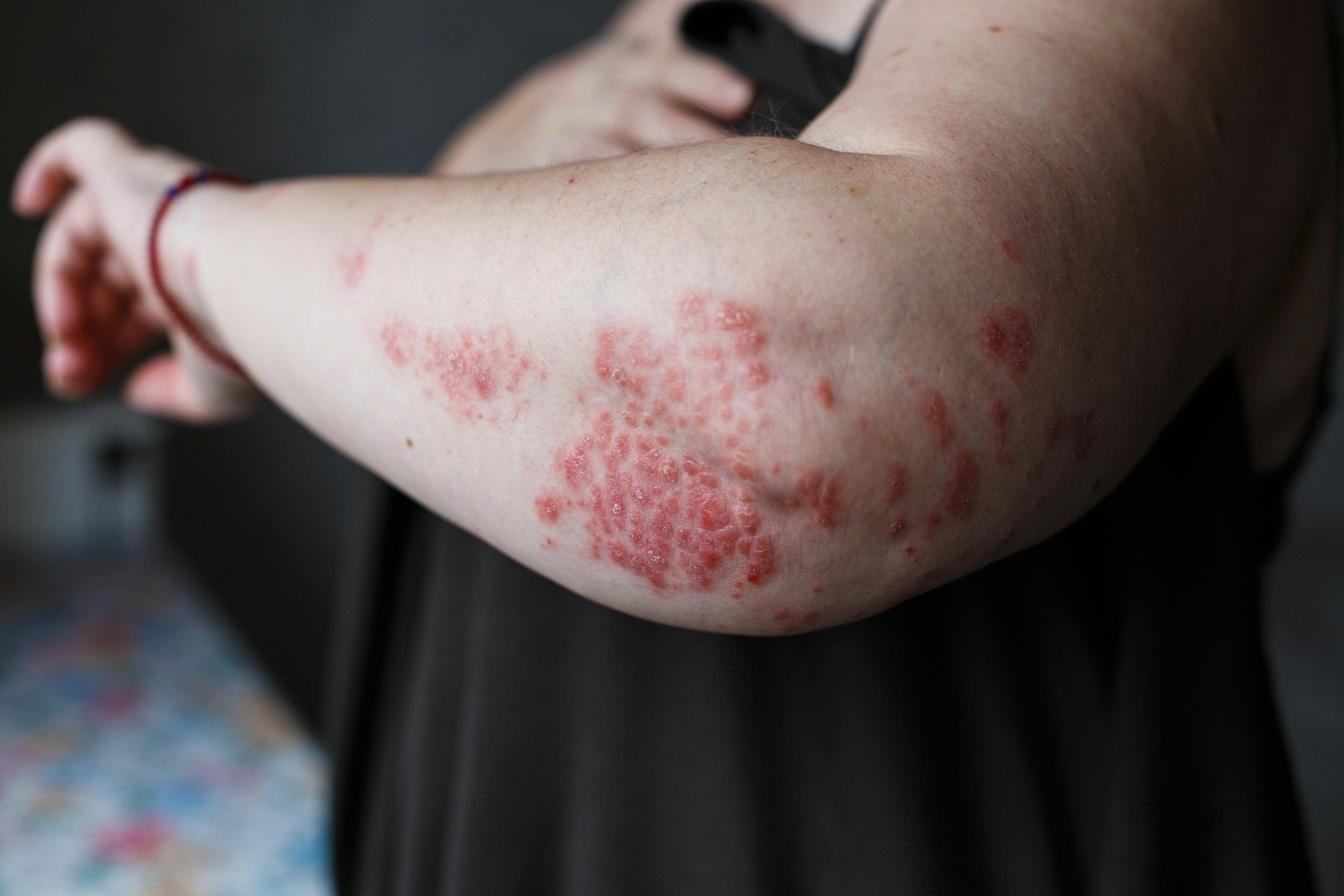- Acne
- Actinic Keratosis
- Aesthetics
- Alopecia
- Atopic Dermatitis
- Buy-and-Bill
- COVID-19
- Case-Based Roundtable
- Chronic Hand Eczema
- Drug Watch
- Eczema
- General Dermatology
- Hidradenitis Suppurativa
- Melasma
- NP and PA
- Pediatric Dermatology
- Pigmentary Disorders
- Practice Management
- Precision Medicine and Biologics
- Prurigo Nodularis
- Psoriasis
- Psoriatic Arthritis
- Rare Disease
- Rosacea
- Skin Cancer
- Vitiligo
- Wound Care
Publication
Article
Dermatology Times
The history of aesthetic lasers
Author(s):
Learn about the evolution of aesthetic lasers from their theoretical origins to the advanced medical devices we have today.
“These advancements represent a quantum leap over technology we had just a decade or two ago," notes Jason N. Pozner, M.D. (©BlackDay/Shutterstocks.com)

The origins of laser technology go back to 1900, when Max Planck, a German theoretical physicist, discovered the relationship between energy and frequency of radiation and concluded that energy could be emitted or absorbed only in discrete chunks, named “quanta.1”
In 1905, physicist Albert Einstein proposed how light delivers its energy in chunks, which are represented by photons-discrete quantum particles.1 Later, in 1916, he introduced the concept of stimulated emission: photons, by interacting with excited atoms or molecules, could stimulate the emission of new photons having the same frequency, phase, polarization and direction of the first one.2
American physicist Theodore Maiman was the first to develop a laser used for clinical application.1 In 1960, he introduced a laser composed of a ruby rod emitting light energy at 694nm.3 In 1963, American surgeon Leon Goldman, a pioneer in applying lasers to dermatologic conditions, reported on the effects of Maiman’s ruby laser in the selective photodestruction of pigmented skin elements such as black hair.
“Other developments and clinical applications soon followed in a flurry of published works,” says Melanie D. Palm, M.D., M.B.A., medical director of Art of Skin MD in Solana Beach, Calif., and assistant volunteer clinical professor of the division of dermatology at the University of California San Diego. Goldman went on to elucidate the use of both ruby and Q-switched lasers for tattoo removal and pigmented lesions while studying the argon laser for vascular lesions and carbon dioxide lasers for skin lesion destruction. Over the next decade, advancements in dermatologic photosurgery developed, including the advent of photodynamic therapy, light-based wound healing and the development of the Nd:YAG (neodymium:yttrium-aluminum-garnet) laser for vascular lesions.
Beyond the 1960s, perhaps the biggest leap forward in the field of cutaneous lasers was the development of the theory of selective photothermolysis by dermatologists Rox Anderson and John Parrish in 1983,4 Dr. Palm says. Their article elucidated the tissue-laser interaction leading to selective destruction of an intended target structure, termed a chromophore.
Laser energy of a predetermined wavelength was preferentially absorbed by a chromophore, creating thermal absorption by the target more so than surrounding structures, leading to selective tissue heating and destruction.
ADVANCEMENTS
In the 1990s, robotic scanning devices were developed, which allowed the laser beam to be moved across the treatment site in a uniform and precise manner. “These scanners helped eliminate excessive tissue injury from over treating tissue by dwelling too long on the same site,” says Matthew Kelleher, M.D., board-certified dermatologist, Premier Dermatology, Crest Hill, Ill. “Scanners also ushered in the next advancement in cutaneous laser surgery-ablative resurfacing.” Resurfacing lasers produced a controlled wound into the epidermis and dermis in order to promote collagen growth, skin tightening and wrinkle reduction. “Dramatic improvements were commonly achieved with these devices; however, the unacceptably high incidence of scarring and hypopigmentation led to a decline in these procedures,” Dr. Kelleher says.
In the ongoing search for laser technology to safely resurface the skin and substantially treat wrinkles and scars, the next major advancement in cutaneous laser surgery was achieved with the development of fractionated laser technology. Fractionated thermolysis (FT) was first described by Huzaira and colleagues5 and the first devices were available in 2004. Simply put, “FT entails creating a pattern of small laser injuries with intervening ‘skip’ areas to promote wound healing,” Dr. Kelleher says. “This allows deep tissue injury without a long recovery, downtime, scarring and hypopigmentation of previous fully ablative skin resurfacing. Fractionated lasers have transformed our ability to treat wrinkles, skin laxity, tone, texture, dyschromia and scars both safely and effectively.”
LASER TECHNOLOGY TODAY
Nowadays, lasers and light devices have the ability to resurface, rejuvenate and treat vascular lesions of all types, says Mark Nestor, M.D., Ph.D., director at the Center for Cosmetic Enhancement and Center for Clinical and Cosmetic Research in Aventura, Fla. They can also remove and modulate fat, reshape the body, remove unwanted hair and grow hair too.
“We can achieve beautiful results with less downtime and more efficacy, and with a higher level of safety for more skin conditions, even those we couldn’t treat safely in the past,” says Jason N. Pozner, M.D., medical director and plastic surgeon, Sanctuary Plastic Surgery, Boca Raton, Fla. “There are fewer telltale signs of treatment, which also meets consumers’ demands.” For example, fewer incidences of hypo- and hyperpigmentation have occurred as technologies have become safer to use on more skin types. “These advancements represent a quantum leap over technology we had just a decade or two ago.”
GAPS IN LASER TECHNOLOGY
Despite achievements, there’s always room for advancement. “Patients want better skin tightening options and fat removal that can yield more dramatic results in fewer treatment sessions,” Dr. Pozner says. “More platforms are available for dermatologists and plastic surgeons today that can be customized, expanded and upgraded as new handpieces are added. These systems allow practitioners to stay current with better, faster treatments for a wide range of conditions more cost effectively.”
For laser hair removal, Dr. Palm says the ultimate achievement would be to relatively remove eumelanin-devoid hair follicles such as white, red, grey and blonde hairs. “Currently, no laser hair removal devices can effectively do this,” Dr. Palm says. And there are still limitations in rejuvenating darker Fitzpatrick skin types rich with melanin. “Currently, we can use longer wavelength laser devices, such as Nd:YAG lasers or infrared lasers, on darker skin types with more conservative laser settings and skin cooling before, after and during treatment to successfully treat skin of color,” according to Dr. Palm.
Treatment time for some procedures is another gap in current laser technology. “The ability to treat an entire face or body in a matter of seconds or minutes has yet to be developed,” Dr. Palm says.
Dr. Kelleher cites multiple areas that need improvement, beginning with the ability to eliminate wrinkles and improve skin tone and texture. “We still can’t substantially tighten skin with lasers,” he says. “A greater ability to target sebaceous glands and successfully treat acne with lasers could potentially eliminate the use of medications such as isotretinoin. The common patient complaint of excessively oily skin still needs to be resolved. The ability of lasers to safely, comfortably and substantially eliminate unwanted fat is lacking. Laser treatment of non-melanoma skin cancer is in its infancy and not widely used. Laser treatment of melanoma is essentially nonexistent.”
A PROMISING FUTURE FOR LASERS
Energy-based devices continue to advance; more developments are coming from different parts of the world, especially Asia. “Better visualization of structures with optical coherence tomography allows us to improve patient outcomes,” according to Dr. Pozner. “We can further customize treatments using the right settings for optimal results for each individual patient. We use combination treatments more widely today and have moved from face to off-face targets (e.g., chest, neck, hands, legs) and often treat more than one area in a single session.”
Another area of potential benefit is the ability to in vivo image tissue with lasers. “This could allow real-time diagnosis without invasively procuring tissue from the patient,” Dr. Kelleher says. “This could allow for more precise and immediate confirmation of tissue margins when treating skin cancers.”
Susan Van Dyke, M.D., medical director and founder of Van Dyke Aesthetics, a Platinum Dermatology Partners
practice in Paradise Valley, Ariz., foresees using lasers as drug delivery systems. “Much work is being done to find ways to safely focus highly active drugs and substances to treatment areas,” she says. Examples include steroids to reduce hypertrophic scars, minoxidil to stimulate hair growth, bimatoprost to promote pigmentation, platelet rich plasma to enhance healing and trigger collagen and elastin productions, hydroquinone to reduce melasma, and post-inflammatory hyperpigmentation. “The cosmetic possibilities are endless, as are medical uses such as treating mycotic conditions, cutaneous neoplasms and psoriasis, to name a few.”
Disclosures:
BTL and Sciton. Dr. Kelleher is an unpaid KOL for Syneron Candela. Dr. Nestor is a consultant, speaker and/or advisory board member for Aerolase, Pulse Biosciences, Rohrer Aesthetics, Sensus Healthcare and Thermi, and has received research grants from Aerolase and Pulse Biosciences. Dr. Pozner reports no relevant disclosures.
References:
1. Gianfaldoni S, Tchernev G, Wollina U, Fioranelli M, Grazia Roccia M, Gianfaldoni R, et al. An overview of laser in dermatology: the past, the present and … the future (?) Open Access Maced J Med Sci. 2017 Jul 25; 5(4):526–530. Published online 2017 Jul 23.
2. Einstein A. Zur Quantentheorie der Strahlung. Physikalische Gesellschaft Zürich. 1916;18:47-62.
3. Maiman TH. Stimulated optical radiation in ruby. Naturevolume. 1960 Aug 6;187:493-494.
4. Anderson RR, Parrish JA. Selective photothermolysis: precise microsurgery by selective absorption of pulsed radiation. Science. 1983 Apr 29;220(4596):524-527.
5. Bogdan Allemann I, Kaufman J. Fractional photothermolysis-an update. Lasers Med Sci. 2010; 25(1):137-144.

Newsletter
Like what you’re reading? Subscribe to Dermatology Times for weekly updates on therapies, innovations, and real-world practice tips.




























